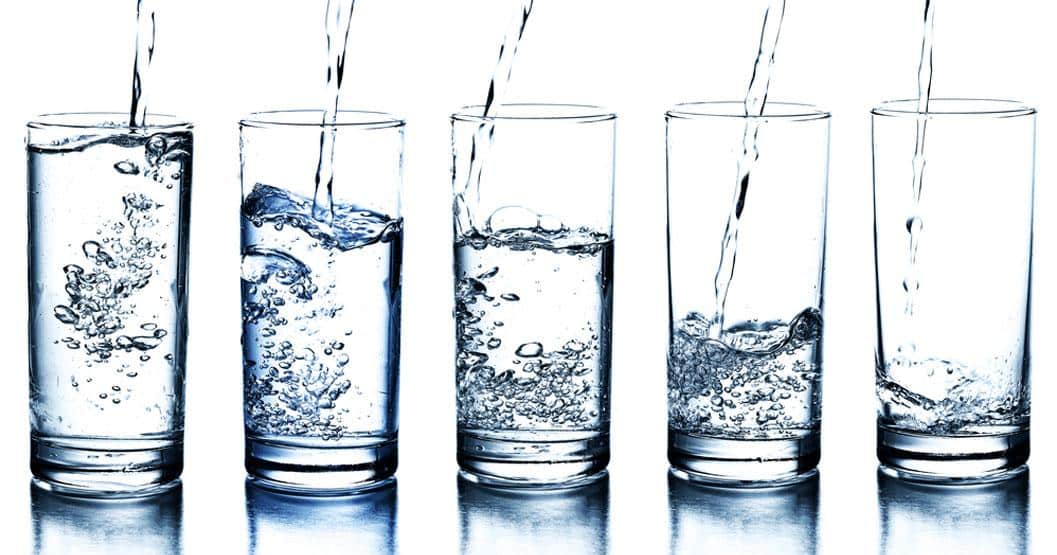Natural mineral water, spring water, purified water… What are the differences?

There is not one water, but many. Depending on its source, its treatment, or lack thereof, water has different names. Below, you can find a brief glossary for a better understanding..

Drinking water
Drinking water is any water that is fit for consumption. Drinking water can be distributed by the public network or pre-packaged (bottled water). All the waters defined below are drinking waters.
Tap water
Mains water and tap water are both terms for water originating from groundwater or surface water reservoirs (lakes, rivers). After various treatments, it becomes drinkable. Its quality is highly regulated and regularly monitored, so it is safe to drink. (EU Commission, 2020)
Read also: Is the quality of tap water good?
Table water
Table water is prepackaged mains water. In other words, it is also surface water that has been treated to make it drinkable. Then it is being bottled.
The officially recognised table waters in Belgium are GENVAL, BIEAUVITA, LIFJALLA, SAVEME et EAU DE TABLE DU PECHET. These waters are regulated by the Royal Decree of 14 January 2002.1
Spring water
Spring water originates from groundwater that is protected from pollution. It is not chemically treated and therefore it must be fit for consumption in its natural state. Spring water brands may mix various spring waters that do not necessarily have the same mineral composition.
The official recognised spring waters in Belgium are des ACACIAS, ALIZÉE, du CERF, des CHARMES/HORNBEAM, ELISE, des FAGNES, JULIE, REINA, SPRING, TOREN, de la VALLÉE, LOUN and SONUWÉ.
The standards for spring water in Belgium are stricter and regulated by the Royal Decree of 8 February 1999 (the same as natural mineral water).2
Natural mineral water
Like spring water, natural mineral water (often abbreviated to mineral water) is extracted and bottled directly from its source, with no further treatment.
However, unlike spring water, each mineral water has a unique origin. Therefore, its mineral composition is stable and can differ from brand to brand.3
It is the subject of a European directive, implemented by the authorities of each member state. Here you can find the list of natural mineral waters that are officially recognised in the European Union.
Read also: Is highly mineralised water ideal?
What about sparkling water?
Water can be naturally sparkling at its source. This is the case when it passes through carbonate rocks. However, waters are usually 're-gasified' before bottling, to control and homogenise the amount of CO2 in each bottle.4
Filtered water VS purified water
Purified water is filtered water, but filtered water is not necessarily purified! In fact, any water that has undergone any kind of filtration treatment can be considered as filtered. The difference is determined by the level of filtration of each system.
Purified water, on the other hand, is water that contains a minimum of dry residues. It is also free of any virus or bacteria. This definition, given by the US Environmental Protection Agency5, is generally accepted by the international industry. This quality of filtration can be achieved, for example, through reverse osmosis or water distillation.
Purified water is the best water for hydrating the body, as it is free of any particles that need to be eliminated by the body. O25 aims to make this water available wherever there is tap water.
Distilled water
Distilled water is water that is boiled and then re-condensed to remove its minerals. Although it does not present any health risk6, it is mainly used to avoid the formation of limescale (household appliances, car washes, etc.) or in laboratories.
Summary
| Drinking water | TDrinkable water |
| Tap water | Mains water distributed by a public body |
| Table water | Prepackaged mains water |
| Springwater | Water collected from several sources and bottled without treatment |
| Natural mineral water | Water collected from one source and bottled without treatment |
| Filtered water | Any water that has undergone a filtration process |
| Purified water | Water that has been purified of viruses, bacteria and almost all minerals by various systems |
| Distilled water | Water that has been stripped of all its minerals by evaporation |
| Sparkling water | Naturally sparkling or artificially carbonated water |
______________
1 https://www.health.belgium.be/fr/alimentation/aliments-specifiques/eaux-en-bouteille/autres-types-deaux/
2 https://www.health.belgium.be/fr/alimentation/aliments-specifiques/eaux-en-bouteille/eaux-de-source
3 https://www.health.belgium.be/fr/alimentation/aliments-specifiques/eaux-en-bouteille/eaux-minerales-naturelles
4 https://www.spa.be/files/download-overlay/kindergarten/fr-BE/4.pdf
5 https://www.epa.gov/sites/default/files/2015-11/documents/2005_09_14_faq_fs_healthseries_bottledwater.pdf
6 https://www.drweil.com/health-wellness/balanced-living/healthy-home/water-the-essential-nutrient/



